-
New technology increase potency of beam weapons
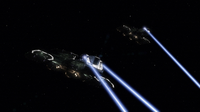
Laser scientists and engineers have long recognized that direct-diode lasers can offer significant advantages over other laser technologies due to their efficiency, reliability, compactness, and relatively low cost; applications for direct-diode lasers have been limited, however, owing to their low brightness — a combination of lower power and poorer beam quality relative to alternative laser technologies; a Massachusetts-based company, using wavelength beam combining (WBC) technology, is offering a way to solve this problem — allowing direct-diode lasers to be used in demanding industrial applications — and in effective beam weapons
-
-
Louisiana parish plans extreme weather alert system
Emergency officials in Ouachita Parish, Louisiana are considering installing warning sirens that would alert residents of dangerous weather; officials hope to install sixty towers throughout the Parish; authorities are currently conducting feasibility studies to determine if installing the sirens is practical and a financial possibility
-
-
Roving robot can rescue people, detonate bombs
Northeastern University student-researchers have created a roving robot that can locate and rescue victims of natural disasters or participate in military missions that are too dangerous for soldiers; students created a complex algorithm that would enable the robot to locate people — or even bombs that are detonated through mobile phones
-
-
Key to coping with disasters: neighbors
A political scientist who had moved to New Orleans only weeks before Hurricane Katrina concluded that neighbors — and cooperation among neighbors — are more important for surviving, coping with, and recovering from disasters than ambulances and fire trucks and government aid; to make sure his observations were more than anecdotal, he visited disaster areas around the world, and his data show that his personal experiences reflect a larger truth
-
-
Clip-on camera helps Mississippi police
The small police force at Walls, Mississippi, has technology on its side: a $60 clip-on camera, the size of a pack of gum, which the officer attaches to the front pocket of his or her uniform; the cameras hold a small memory card, capable of recording hours of evidence; the cameras have never been challenged in court
-
-
Butte County police lobbies for armored vehicle
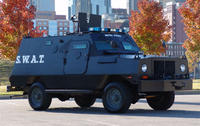
For the second year in a row local law enforcement officials in Butte County, California are rallying to obtain grant money to help purchase an armored vehicle; if money from 2011 DHS grants is allocated to Butte County by the state, officials say it would be used to purchase an armored vehicle for the Butte County Sherriff’s Office and Chico
-
-
FAA studies general aviation airports

There are 368 primary airports in the United States — and 2,950 nonprimary, or general aviation, airports; the FAA is now studying the roles and functions of these general aviation airports; general aviation airports provide a variety of functions, ranging from access for emergency medical services, disaster relief, aerial firefighting, law enforcement, and border control to agricultural functions, flight training, charter passenger and time-sensitive air cargo services, among others
-
-
Key milestone for compact high-power laser

Enemy surface-to-air threats to U.S. manned and unmanned aircraft have become increasingly sophisticated, creating a need for rapid and effective response; one solution for countering these threats is high-powered lasers, which harness the speed and power of light to counter multiple — and rapidly approaching — threats; to be useful in combat, however, these lasers need to be lighter and require less space than current state-of-the-art for use on many of today’s air assets; DARPA is working to develop this compact laser
-
-
New Haven, Connecticut police begin installing security cameras
New Haven police plan to install twenty-one surveillance cameras in the city’s hot spots for crime. The cameras will give officers a 360 degree view of an area’s streets and sidewalks; police hope that the cameras will help reduce New Haven’s rising violent crime rate; in the first half of 2011, more than eighteen people have been killed
-
-
Austin fights to keep federal money to battle cartels
With federal lawmakers struggling to reduce spending and cut the deficit, Austin, Texas, could lose as much as $2 million in federal grant money that it uses to combat Mexican drug cartels; on Tuesday, Austin police chief Art Acevedo and Representative Michael McCaul (R-Texas) urged lawmakers not to cut their funding citing the fact that the city is a dangerous hub for drug cartels
-
-
Concrete-breaching rescue tool available via GSA schedule
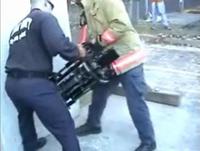
Raytheon’s Controlled Impact Rescue Tool (CIRT) is a portable unit designed to aid fire departments, local and federal rescue agencies, and the military services; the tool sends pulverizing shock waves that enable rescuers to breach concrete structures faster than with existing techniques such as drilling, chipping or sawing; GSA has just added CIRT to the GSA schedule
-
-
U.S. spends $90 billion on border security, drugs keep pouring in
A recent study found the United States has spent an estimated $90 billion over the past decade to secure the U.S - Mexico border with mixed results;annual border spending had tripled over the last decade; the increased spending has helped curb illegal immigration, but for Mexican drug cartels business is booming and they are smuggling more drugs than ever into the United States
-
-
SWAT Team in Washington acquires heavily armored vehicle
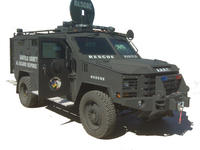
The Tri-City Regional SWAT Team in Tacoma, Washington recently received a major boost to its arsenal of crime fighting tools;thanks to DHS grants, the Tri-City Regional Swat Team was able to purchase the BearCat, a $292,000 armored personnel carrier; the vehicle is heavily armored and is capable of stopping .30-caliber ammunition
-
-
Wireless fingerprint readers help police fight crime
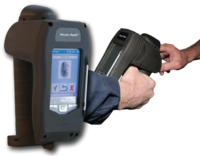
Using a new wireless device, police across the country are now able to quickly and accurately identify a suspect in the field; using RapID, a small handheld unit, officers can read a suspect’s fingerprint and check it against a database for any matches; if any matches are found the device will pull up the person’s real name, date of birth, gender, and race, making it more difficult for criminals to use a false identity
-
-
More borders, cheaper conflict steadily increase number of wars
New research shows that the frequency of wars between states increased steadily from 1870 to 2001 by 2 percent a year on average; the research argues that conflict is being fed by economic growth and the proliferation of new borders
-
More headlines
The long view
Tantalizing Method to Study Cyberdeterrence
Tantalus is unlike most war games because it is experimental instead of experiential — the immersive game differs by overlapping scientific rigor and quantitative assessment methods with the experimental sciences, and experimental war gaming provides insightful data for real-world cyberattacks.
Using Drone Swarms to Fight Forest Fires
Forest fires are becoming increasingly catastrophic across the world, accelerated by climate change. Researchers are using multiple swarms of drones to tackle natural disasters like forest fires.
Testing Cutting-Edge Counter-Drone Technology
Drones have many positive applications, bad actors can use them for nefarious purposes. Two recent field demonstrations brought government, academia, and industry together to evaluate innovative counter-unmanned aircraft systems.
European Arms Imports Nearly Double, U.S. and French Exports Rise, and Russian Exports Fall Sharply
States in Europe almost doubled their imports of major arms (+94 per cent) between 2014–18 and 2019–23. The United States increased its arms exports by 17 per cent between 2014–18 and 2019–23, while Russia’s arms exports halved. Russia was for the first time the third largest arms exporter, falling just behind France.
How Climate Change Will Affect Conflict and U.S. Military Operations
“People talk about climate change as a threat multiplier,” said Karen Sudkamp, an associate director of the Infrastructure, Immigration, and Security Operations Program within the RAND Homeland Security Research Division. “But at what point do we need to start talking about the threat multiplier actually becoming a significant threat all its own?”
The Tech Apocalypse Panic is Driven by AI Boosters, Military Tacticians, and Movies
From popular films like a War Games or The Terminator to a U.S. State Department-commissioned report on the security risk of weaponized AI, there has been a tremendous amount of hand wringing and nervousness about how so-called artificial intelligence might end up destroying the world. There is one easy way to avoid a lot of this and prevent a self-inflicted doomsday: don’t give computers the capability to launch devastating weapons.
